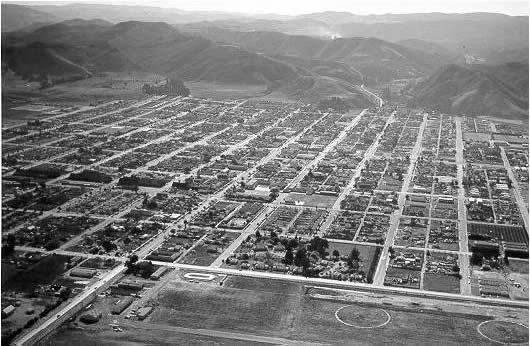Lompoc is a city in Santa Barbara County, California. Take a look below for 15 amazing and fun facts about Lompoc, California, United States.
1. Located on the Central Coast, Lompoc had a population of 44,444 in the 2020 census.
2. Lompoc has been inhabited for thousands of years by the Chumash people, who called the area Lum Poc, meaning “stagnant waters” or “lagoon” in the local Purisimeño language.
3. The Spanish called the area Lompoco after Fermín de Lasuén had established Mission La Purísima in 1787.
4. In 1837, the Mexican government sold the area as the Rancho Lompoc land grant. Following the American Conquest of California, multiple settlers acquired the Lompoc Valley, including William Welles Hollister, who sold the land around the mission to the Lompoc Valley Land Company, which established a temperance colony which incorporated in 1888 as Lompoc.
5. Lompoc is often considered a military town because it is near Vandenberg Space Force Base.
6. Before the Spanish conquest, the area around Lompoc was inhabited by the Chumash people. The Original Mission La Purísima was established in 1787 near what is now the southern edge of the city. Purisimeño, a Chumashan language, was spoken in the region during the mission period.
7. After an earthquake destroyed the mission in 1812, it was moved to its present location 1 mile (1.6 km) northeast of the present city. After independence from the Spanish Empire, the First Mexican Empire was established in 1821. The Mexicans secularized the Spanish missions in 1833, and La Purisima Mission fell into ruins.
8. In 1893, a diatomaceous earth mine, formerly owned by Johns Manville, World Mineral, and Celite corporation, now Imerys Inc., opened in the southern hills in Miguelito Canyon. It became (and still is) the largest marine diatomite mine in the world, and at one time was the largest employer in the valley.
9. While owned by Johns Manville, the mine employed more than 900 people at its peak, and built housing for its employees onsite and in town; the houses in town are next to JM park, which was donated to the city by the mine. Another diatomaceous earth company, Grefco, operated here from the 1940s until 1998.
10. The remnants of its mine at the northeast end of town were torn down in 2001.
11. In 1909, the Sibyl Marston—at the time, the largest steam schooner built on the West Coast—sank nearby while carrying 1,100,000 board feet (2,600 m3) of lumber. Many of the older Lompoc homes were built with lumber from the shipwreck. The wreckage can still be seen south of Surf Beach.
12. The coastal branch of the Southern Pacific Railroad opened around 1900 and eventually replaced ship transportation. A paved road linked Lompoc to Buellton and the rest of California around 1920. In 1923, the Honda Point disaster, the U.S.’s largest peacetime naval accident, occurred just off the coast; nine U.S. destroyers ran aground, killing 23 people.
13. During the Great Depression, La Purisima Mission was restored by the Civilian Conservation Corps (CCC). During World War II, the coast west of Lompoc was the site of Camp Cooke, a United States Army training camp where large units could practice maneuvers.
14. Lompoc grew slowly until 1958, when the United States Air Force announced that the former Camp Cooke would be a test site for the Thor family of intermediate-range ballistic missiles and the first operational base for the SM-65 Atlas, an intercontinental ballistic missile.
15. The city then began to grow rapidly to provide housing for thousands of civilians and contractors employed at what was soon renamed Vandenberg Air Force Base. It was the Air Force’s first missile base.




